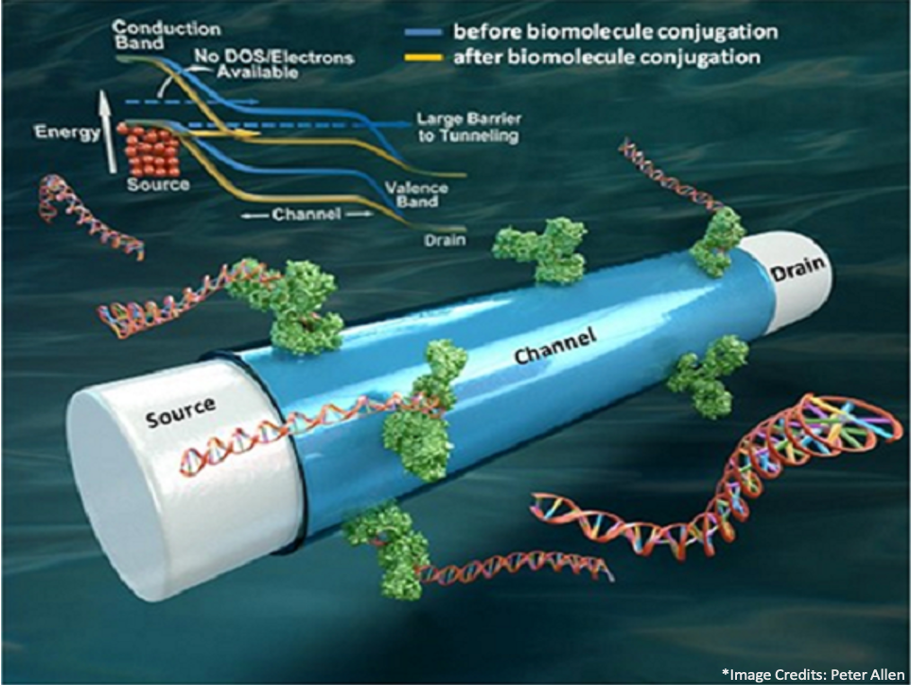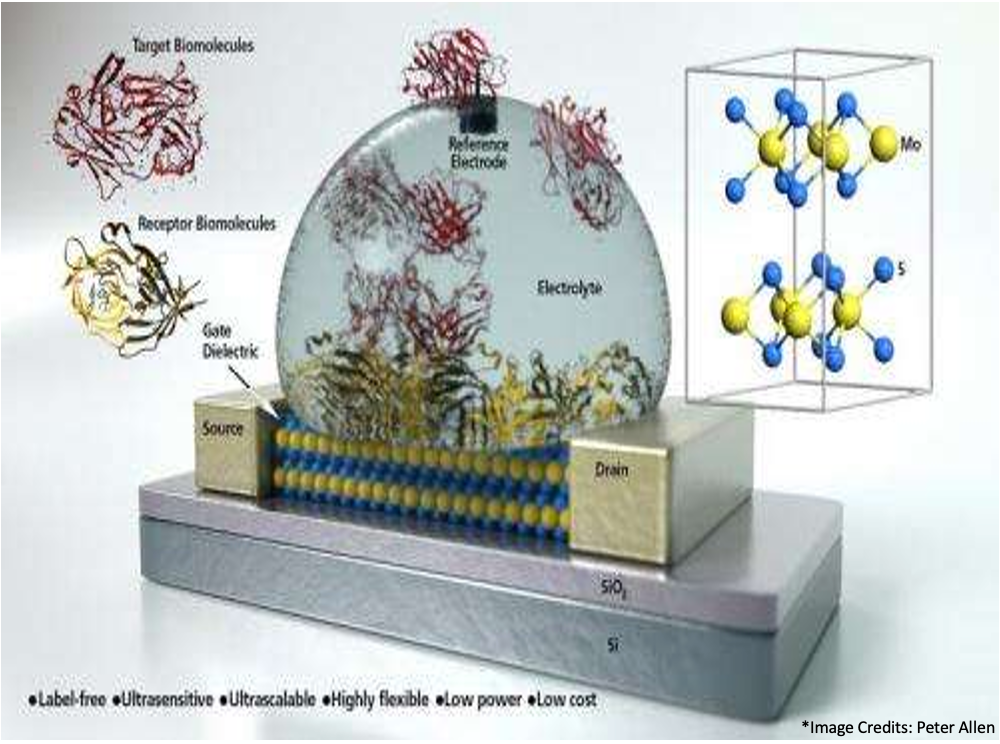Ultra-Sensitive Electrical Biosensors for Point-of-Care Applications
Sensors, especially biosensors, are indispensable for modern society due to their wide applications in public healthcare, national and homeland security, and forensic industries as well as environmental protection. Detection of biomolecules at ultra-low concentration (sub-picomolar to 100 atto-molar) is necessary for screening many cancers, neurological disorders and early stage infections such as HIV. However, current medical diagnostic tools either have low sensitivity (picomolar detection) or require bulky expensive equipment and extensive procedures that cannot be performed outside well-controlled lab environment.
Our research established, for the first time, that the material and device technology which has evolved mainly with an aim of sustaining the glorious scaling trend of Information Technology, can also transform a completely diverse field of bio/gas-sensor technology [Nat. Nano. (Research Highlights) 7,275 (2012)] [D. Sarkar et. al., Appl. Phys. Lett., 102, 023110 (2013)] [D. Sarkar et. al., ACS Nano, 8, 3992–4003 (2014)] [D. Sarkar et. al., Nano Lett., 15, 2852–62 (2015)]. We experimentally demonstrated electrical bio- and gas-sensors based on molybdenum disulfide (MoS2), which provides extremely high sensitivity and at the same time offers easy patternability and device fabrication, due to its 2D atomically layered structure. Moreover, we proposed for the first time, biosensors based on low subthreshold swing electronic devices (steep turn-ON characteristics) and theoretically illustrated that they can break the fundamental limits in sensitivity of conventional electrical biosensors and lead toincrease in sensitivity by more than four decades. [D. Sarkar et. al., Appl. Phys. Lett., 100, 143108 (2012)] [D. Sarkar et. al., Appl. Phys. Lett., 102, 203110 (2013)] [D. Sarkar et. al., Appl. Phys. Lett., 102, 023110 (2013)].
We plan to integrate the ultra-sensitive biosensing capabilities of novel nanoelectronic transducers with read-out circuitry as well as sample processing steps to build a hand-held low-power device which can enable detection of extremely low concentration (single entity) of biomolecules from whole blood. This diagnostic device being ultra-sensitive, will enable early disease detection and being scalable and low-power, will allow point-of-care application and extend diagnosis to remote areas. Such technology can save billions of lives and cause massive reduction in health-care costs.

